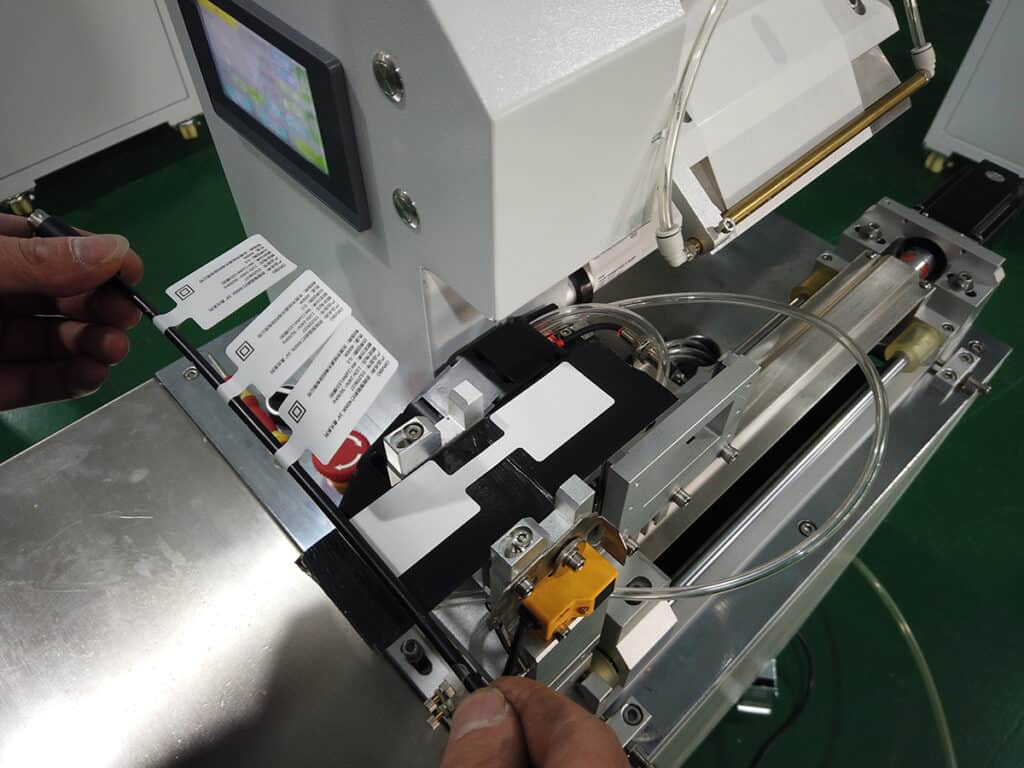In the intricate world of electrical installations and electronic manufacturing, the necessity of clearly labeled wires and cables cannot be overstated. Proper labeling ensures safety, simplifies maintenance, and facilitates trouble-free upgrades and repairs by helping technicians quickly identify each wire and its purpose. Without clear, durable labels, the risks of costly errors and time-consuming rectifications increase dramatically.

Introduction to Wire and Cable Labeling
Labeling wires and cables is a critical task in electrical, telecommunication, and data centers. The goal is to provide clear, readable, and durable labels that withstand the environmental conditions of their installation. Labels can include information such as wire destination, signal type, and voltage level or data about the cable’s origin and endpoints.
The process involves selecting the right label material and printing technology to ensure that labels remain legible throughout the life of the wire or cable. This often includes considerations for resistance to heat, moisture, and chemical exposure, particularly in industrial environments or outdoor applications.
Labeling Systems Overview
Modern labeling systems offer a variety of solutions to meet the diverse needs of wire and cable labeling. These systems range from simple handheld label printers for on-the-spot applications to sophisticated, computer-integrated printing systems for large-scale operations. The choice of a labeling system depends largely on the volume of labels needed, the complexity of the labeling requirements, and the specific environmental conditions the labels must endure.
Key considerations when selecting a labeling system include the type of labels, the print technology (thermal transfer vs. direct thermal), and the ability to integrate with existing data management systems to ensure labels are accurate and up-to-date. This helps in minimizing human errors and increases the efficiency of the labeling process.
Factors Influencing Labeling Machine Price
When considering a labeling machine for wires and cables, the price can vary significantly based on several factors. Labeling machine price is influenced by the machine’s capabilities, including its speed, resolution, and the ability to print labels that are resistant to environmental challenges such as UV light, moisture, and extreme temperatures.
Higher-end models might also feature connectivity options like USB, Ethernet, or Wi-Fi, and compatibility with various labeling software. For businesses requiring high-volume labeling with robust needs, investing in a more advanced machine could be cost-effective in the long run due to lower operational costs and higher durability.
Types of Wire Labelers
There are various types of wire labelers available to suit different needs and budgets. Handheld labelers are portable and ideal for low-volume labeling tasks in field installations or small projects. These devices are usually economical and user-friendly, making them a popular choice for many technicians.
On the other hand, desktop wire labelers are suited for higher-volume tasks and often support a broader range of label materials and sizes. They may also offer more advanced features such as automatic cutter, peel-and-present capabilities, and a full-color display to preview labels before printing.
Importance of Durable Labels
The durability of wire and cable labels is paramount, as they must often withstand harsh conditions. Labels must be made from materials that can resist fading, smearing, and degradation from exposure to oils, solvents, and other chemicals. Additionally, they must be flexible enough to wrap around cables without peeling off or losing adhesion.
For environments with extreme conditions, such as outdoor installations or places with high heat and humidity, specialty labels designed to withstand these challenges are essential. These labels ensure that critical information remains accessible, reducing the risk of errors during maintenance or upgrades.
Best Practices in Labeling Wires and Cables
To achieve optimal results, it’s important to follow best practices when labeling wires and cables. Always use a consistent labeling scheme that includes clear, concise information and adheres to any industry standards applicable to your work environment. This might involve using standardized color codes or numbering systems.
Labels should be placed at both ends of each wire and at regular intervals along longer runs. This ensures that the information is accessible no matter where the cable is accessed. It’s also beneficial to use labels that can be easily updated or replaced as system configurations change.
Troubleshooting Common Labeling Issues
Common issues with labeling wires and cables can range from labels that peel off prematurely to printed information that becomes unreadable over time. To prevent these problems, always ensure that the surface of the wire or cable is clean before applying labels. Selecting the right adhesive and material for your specific environment will also help in extending the life of your labels.
If problems persist, it may be necessary to reevaluate your choice of labels or consider a different type of labeling system that better suits your needs. Sometimes, consulting with a specialist or returning to the labeling system manufacturer for advice can provide solutions.
Conclusion
Effective wire and cable labeling is crucial for safety, efficiency, and compliance in many industries. By choosing the right labeling system and practices, you can ensure that your labels meet the demands of your environment and remain useful throughout the lifespan of the labeled wiring. Remember, a little effort in planning and executing your labeling strategy can save a considerable amount of time and resources in the long run.
You may be interested:
- How does a labeling machine work?
- Why is labeling equipment important?
- How are cables and conductors labelled to specifications?
- What are the different types of cable tagging?






